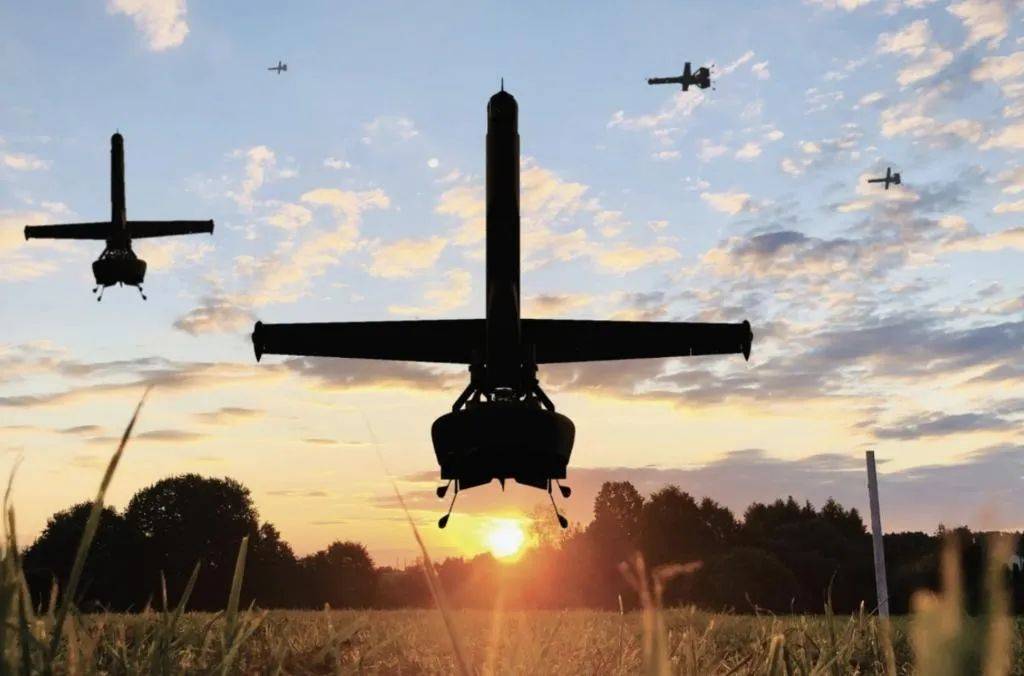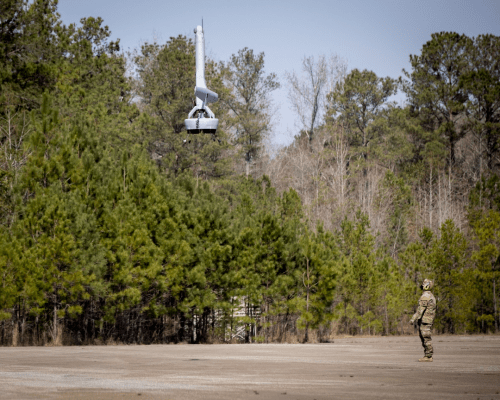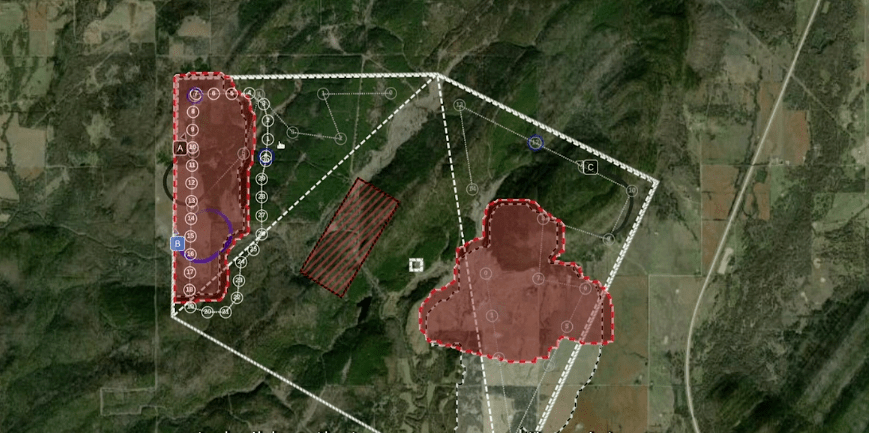
Abstract:On October 9, the US defense technology company Shield AI launched a new drone cluster technology product called "V-BAT Teams", which can enable the V-BAT drone fleet to Perform military missions without relying on GPS or external communications. This article mainly gives a brief introduction to the basic overview of the technology, introduction to V-BAT drones, product analysis and future development of "V-BAT Teams".
Keywords: UAV, UAV swarm, automated weapon, autonomous navigation system, artificial intelligence

According to Shield AI, "V-BAT Teams" is powered by its Hivemind AI system. The system is an artificial intelligence pilot software that is mainly capable of autonomously providing threat detection and route planning for aircraft, and coordinating multiple aircraft operations without relying on external data links that are susceptible to interference
Hivemind AI’s modular system architecture can be easily applied to other aircraft. Shield AI claims Hivemind AI has been successfully demonstrated on a variety of aircraft including quadcopters, V-BAT drones and F-16 fighter jets
The new drone cluster technology product "V-BAT Teams" released this time can support autonomous coordinated actions of 4 V-BAT drones at the same time, covering an area of 30,000 square miles, achieving 7*24 hours of uninterrupted operations Monitor more than 1,000 potential targets and continuously track and target them
1. Background introduction
When it comes to V-BAT drones, we must first introduce the US military’s RQ-7 series “Shadow” drones. The U.S. Marine Corps once equipped it with RQ-7B drones and established a "Shadow" drone squadron. It is precisely because of some defects in the use of this drone that promoted the development of the V-BAT drone
The RQ-7 series UAV is a brigade-level light reconnaissance UAV that was born more than 20 years ago. Take the RQ-7B UAV ("Shadow" 400) equipped by the U.S. Army and Marine Corps as an example. It is 3.4 meters long, has a wingspan of about 6 meters, has a radius of use of 185 kilometers, and can conduct all-weather reconnaissance at an altitude of 2438.4 meters 3.5 Ground tactical vehicles within a kilometer tilt distance. This model is small in size, light in weight, and flexible in use. It can be deployed in every corner where it is needed at any time using a C-130 transport aircraft. It can integrate more than 32 types of mission loads and is equipped with AAI's 1325 gimbal. It can be installed with continuous zoom high-resolution charge-coupled device TV cameras, low-light TV cameras, high-resolution forward-looking infrared sensors, and photoelectric/infrared sensors. Sensors, atmospheric sensors or nuclear/biological/chemical detection sensors can well meet the US military's operational requirements for tactical-level drones.
However, this system also has obvious shortcomings, such as being too noisy, not easy to carry, and the system is huge. Although it can be transported using a Hercules transport aircraft, a complete four-shadow UAV system, including aircraft, high-mobility wheeled vehicles, hydraulic launchers and ground data control terminals, requires three C- 130 to transport. The US military has also been complaining about this

Therefore, the U.S. military urgently needs a model that can solve the shortcomings of the RQ-7 light tactical unmanned aerial vehicle, and the "Future Tactical Unmanned Aerial System (FTUAS)" came into being, and V-BAT vertical take-off and landing drone is the product of this system.
2.Performance data
V-BAT was developed by Martin UAV Company, a subsidiary of Shield AI. It has a length of 2.4 meters, a wingspan of 2.74 meters, and a maximum flight speed of 166 kilometers per hour. Its latest improved model, V-BAT 128, can fly at an altitude of 4,500 meters. It can cruise for 11 hours at a speed of 83 kilometers per hour, has a range of about 560 kilometers, can adapt to a maximum take-off and landing wind speed of 25 knots, and a maximum load of about 11.3 kilograms. It can carry different cameras, infrared sensors, and lasers according to mission requirements. indicator or other device.

3.Advantages
The V-BAT drone can transition from takeoff to hovering on most terrains, and continue to observe and perform tasks to ensure stable sensor operation. Compared with the cumbersome take-off and landing equipment of the RQ-7 series, the V-BAT drone does not require any take-off and landing equipment. It only requires two people to complete the take-off and landing, and the time is controlled within 30 minutes

V-BAT drone does not require any external equipment to assist in take-off. Its supporting system is very simple, requiring only one aircraft, one control console, and one signal tracking antenna to complete all tasks. The US military's military off-road vehicles, Black Hawk helicopters and even civilian pickup trucks can transport it, which can bring certain advantages to possible urban battles in the future.

1. "V-BAT Team" can perform military missions without relying on GPS or external communications
According to official information from Shield AI, each V-BAT drone in “V-BAT Teams” is equipped with a “Xavier NX” computing module and equipped with an artificial intelligence pilot. Even in an environment where GPS and communications are subject to strong interference and cannot be used normally, V-BAT can respond based on real-time dynamics on the battlefield to complete its mission.

Judging from the mission requirements faced by various branches of the US military, in an environment of strong electronic countermeasures (such as the Taiwan Strait area), drone clusters based on artificial intelligence and autonomous systems have important strategic/tactical value and may change the war situation. influence.
2. "V-BAT Team" can allow multiple aircraft to coordinate their actions independently
Thanks to the shared sensors within the drone cluster, "V-BAT Teams" can still communicate with each other among multiple drones even without receiving any instructions from the drone operator. And establish collaborative planning to greatly improve cooperation efficiency and mission success rate.

3. “V-BAT Teams” has lower costs and easy-to-supplement logistics
Tseng, co-founder of Shield AI, said the V-BAT drone will cost around six figures. This means that the V-BAT drone can be used as a decoy to draw out enemy fire, and can withstand attacks originally aimed at manned aircraft. At the same time, the cooperation between multiple drones in "V-BAT Teams" can increase the success rate of drone swarm operations, thereby greatly reducing the risk cost of manned aircraft
The V-BAT UAV has the characteristics of light weight, convenient transportation, and simple logistics and maintenance, making it capable of large-scale transportation and deployment, suitable for most areas around the world, and the logistics support cost is relatively low. Therefore, "V-BAT Teams" is a technology product that can provide strategic advantages
The current goal of Shield AI is to double the size of its autonomous V-BAT drone fleet every year, from four now to eight next year, as it continues to expand. In the future, "V-BAT Teams" will first focus on maritime reconnaissance and perception missions, but its applications may be expanded to air defense suppression, strike operations, escort missions, etc. Shield AI will conduct software updates to the Hivemind AI system every quarter and hardware upgrades every two years to ensure that it continues to evolve to adapt to new mission requirements.
The rewritten content is as follows: Based on the above information, it can be seen that the "V-BAT Teams" UAV cluster technology product can improve the mission success rate in a strong electronic countermeasures environment and undertake more and more high-level tasks. Risky tasks. In addition, the technology offers certain strategic advantages in a low-cost and high-return model. This technology also has the characteristics of modularity and portability, and may be applied to different types of platforms in the future
The above is the detailed content of Shield AI launches 'V-BAT Teams” drone swarming technology. For more information, please follow other related articles on the PHP Chinese website!




